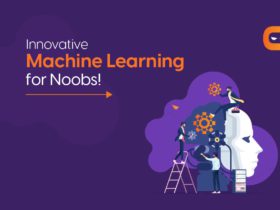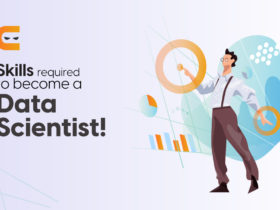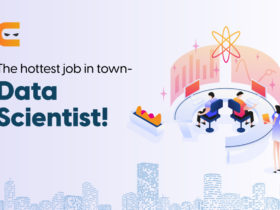
Lately, the term ‘Artificial Intelligence’ has been making headlines and rightly so. Artificial Intelligence (AI trends), that was previously thought to be the stuff science fiction was made of, is now a living, breathing reality of the present-day world. Even though AI is at its infancy, the marvels that it has helped in creating today is helping to make our lives much more convenient and comfortable. Think about smart homes, smart personal assistants, online recommendation engines, self-driving cars, and so much more – all of this has been made possible through AI.
As AI technology continues to develop and progress, it is giving rise to numerous possibilities and innovations that were, in the past, beyond our imagination. Furthermore, with AI we’re witnessing the rise of many interlinked technologies such as Machine Learning (ML), Cognitive Computing, Natural Language Processing (NLP), Neural Network, and Robotics, to name a few. Coupled with these technologies, AI is transforming the face of every major industry today, from business and technology to education and healthcare. In fact, Statista maintains that between 2017-22, the global revenue of the AI market is estimated to increase by ten times.
Seeing as AI is here to stay, here are four AI trends to look out for in 2018!
Table of Contents
Machine Learning: AI trends
Machine Learning is all about enabling computers to learn from data and improve specific functions without relying on human commands or assistance. One of the greatest contributions of ML has been automation. For instance, smart homes and virtual assistants are the best examples of home automation. The smart devices, such as a smart thermostat or a smart TV, learn from your behavior and preference patterns and adjust the home temperature or play your favorite movies based on those patterns.
However, automation is not just confined to the boundaries of your home. The financial sector is now heavily relying on automation to automate the redundant and mechanical tasks, thereby freeing up the valuable time of employees. Also, ML plays a big role in helping companies in the banking and finance sector to detect and prevent fraud. These advanced ML models are designed to learn from historical data and trace and identify any anomalies, thereby alerting both companies and customers of potentially fraudulent activities.
AI and ML are also creating a huge wave of change in the healthcare sector. Smart machines that function on advanced algorithms are helping improve the overall workflow and data management in hospitals. Innovative ML applications are helping in the accurate prediction of life-threatening diseases, drug discovery, personalized treatment (remote monitoring and wearables), gene-sequencing, and much more. Moreover, Robotic Surgery is making it possible for doctors to perform even critical operations without causing much wear and tear to the patient.
Natural Language Processing– AI trends
Natural Language Processing (NLP) is a branch of AI that aims to teach computers to analyze, interpret, understand, and manipulate human languages so as to facilitate a smooth interaction between computers and humans.
NLP is gaining traction rapidly with the various NLP applications ruling our lives today such as chatbots and virtual assistants. The inclusion of chatbots on various online platforms has taken customer service to a whole other level. The chatbots are designed to handle and answer to all kinds of customer queries and assist them. Then we have the smart personal assistants like Alexa, Siri, and Cortana that can not only interact with you but also perform various functions for you including playing your favorite songs, giving you weather updates, shopping online, and so much more! This is not only fun but also a great way to get your tasks done efficiently.
Sentiment Analysis
Today, business is not just about profit maximization but it is primarily about optimizing customer satisfaction. Putting an increased importance on enhancing the overall customer satisfaction, companies across the globe are leveraging sentiment analysis to analyze and understand the behavior and preference patterns of their customer segments. Using sentiment analysis, computers are able to understand the intent of the customers behind their comments, feedback, queries, compliments, and grievances. This allows brands to address the specific needs and woes of their clientele base and create better products/services that are more likely to gel with their tastes.
Lately, researchers have also begun to experiment with sentiment analysis and the impact it could have on the healthcare industry. For instance, virtual private assistants (VPAs) could assist patients and provide them with a more personalized healthcare routine. Then again, emotion-sensing wearables could monitor and track the mental health of patients and intimate the physician in case there’s any fluctuation in the health stats of a patient.
Smart Cities
As the global population continues to escalate by the minute, cities around the world are faced with the problem of providing the basic resources to their citizens including water, electricity, housing spaces, clean air, healthcare services, and quality transportation, among others. In the light of this increasing burden on the rapidly growing urban spaces, governments of various countries are striving to make a shift towards ‘Smart Cities.’ These smart cities are designed to address the rising urban challenges with the help of AI, IoT, and Big Data. For instance, using Big Data and smart cams together, governments can get real-time inputs (images and videos) about traffic and accidents in various parts of the city, thereby helping the administration to better manage traffic issues and provide emergency services promptly in and across the city.
The concept of smart cities is already a big hit and is being iterated across many countries in the world today.
With all that being said, one this is for sure – AI is here to stay. As AI technology continues to progress as we speak, there’s definitely much more to come in the future.
To read more about top trends of today, click here.














Leave a Reply